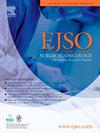Development and evaluation of a multivariable prediction model for overall survival in advanced stage pulmonary carcinoid using machine learning
IF 3.5
2区 医学
Q2 ONCOLOGY
引用次数: 0
Abstract
Background
Evidence is limited on whether patients with advanced pulmonary carcinoid (APC) benefit from comprehensive pulmonary resection (CPR), chemotherapy, or radiotherapy. Existing prognostic models for APC are limited and do not guide treatment selection. This study aims to develop and evaluate a multivariable machine learning model to predict overall survival in APC patients and provide a web-based prognostic tool.
Methods
Clinical data of APC patients were obtained from SEER database. Propensity score matching reduced retrospective study bias. Kaplan-Meier analysis evaluated survival differences between CPR vs. nonCPR, chemotherapy (Chem) vs. no chemotherapy (nonChem), and radiotherapy (Radio) vs. no radiotherapy (nonRadio). Univariate and multivariate Cox regression identified survival-associated variables. Using these clinical variables, 91 machine learning models were developed to predict APC survival, and the best model led to a web-based prognostic tool.
Results
Among 1077 APC patients, 37.0 % underwent CPR, 30.2 % received chemotherapy, and 19.9 % received radiotherapy. After matching, overall survival was significantly improved in the CPR compared to the nonCPR. However, there were no significant differences in survival between the Chem and nonChem groups or between the Radio and nonRadio groups. Eight out of 13 clinical variables were significant prognostic variables. Models with eight variables reached a mean C-index of 0.770 and a 5-year AUC of 0.835. Using all 13 variables, a C-index of 0.785 and an AUC of 0.850 was achieved. An online tool (https://apcmodel.shinyapps.io/APCsp/) displays survival curves for different treatments.
Conclusion
The developed prognostic model enables individualized survival predictions and supports evidence-based treatment decisions for APC patients.
求助全文
约1分钟内获得全文
求助全文
来源期刊

Ejso
医学-外科
CiteScore
6.40
自引率
2.60%
发文量
1148
审稿时长
41 days
期刊介绍:
JSO - European Journal of Surgical Oncology ("the Journal of Cancer Surgery") is the Official Journal of the European Society of Surgical Oncology and BASO ~ the Association for Cancer Surgery.
The EJSO aims to advance surgical oncology research and practice through the publication of original research articles, review articles, editorials, debates and correspondence.
 求助内容:
求助内容: 应助结果提醒方式:
应助结果提醒方式:


